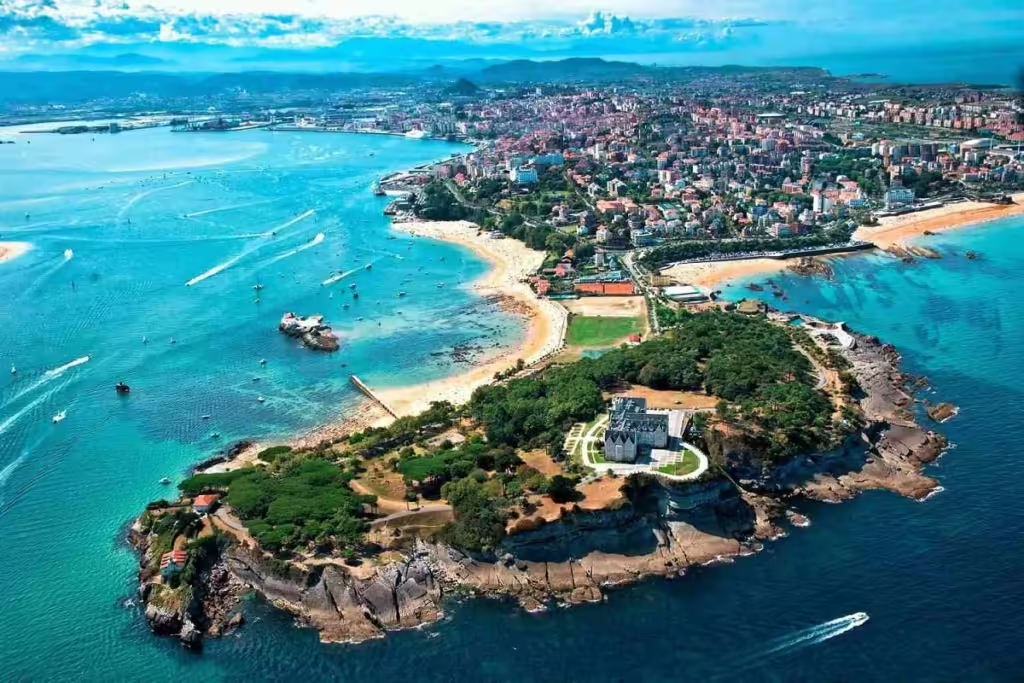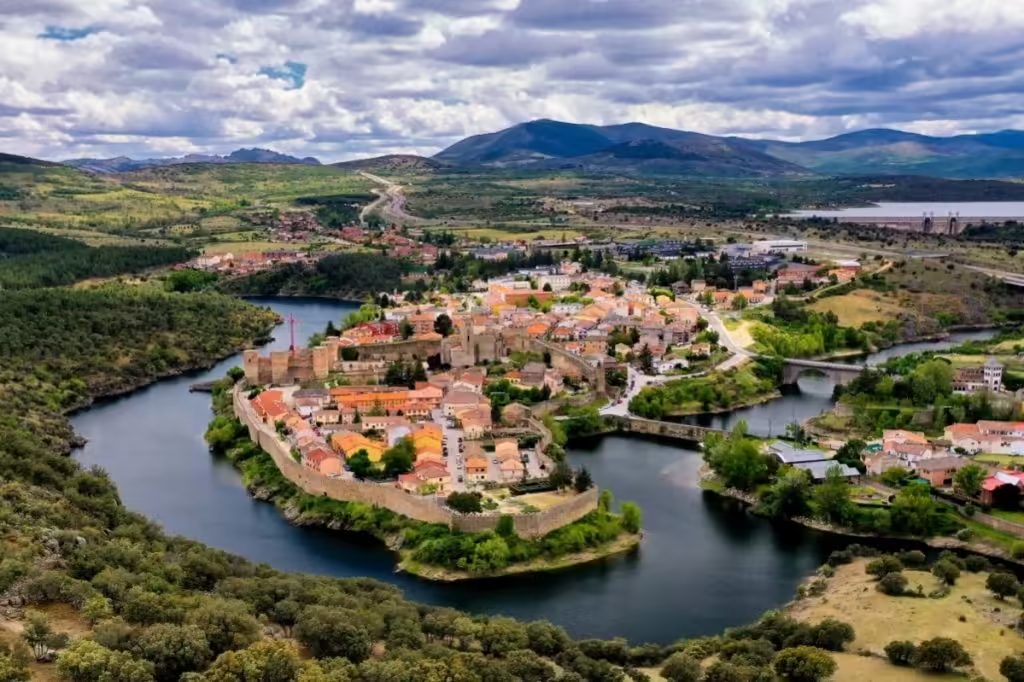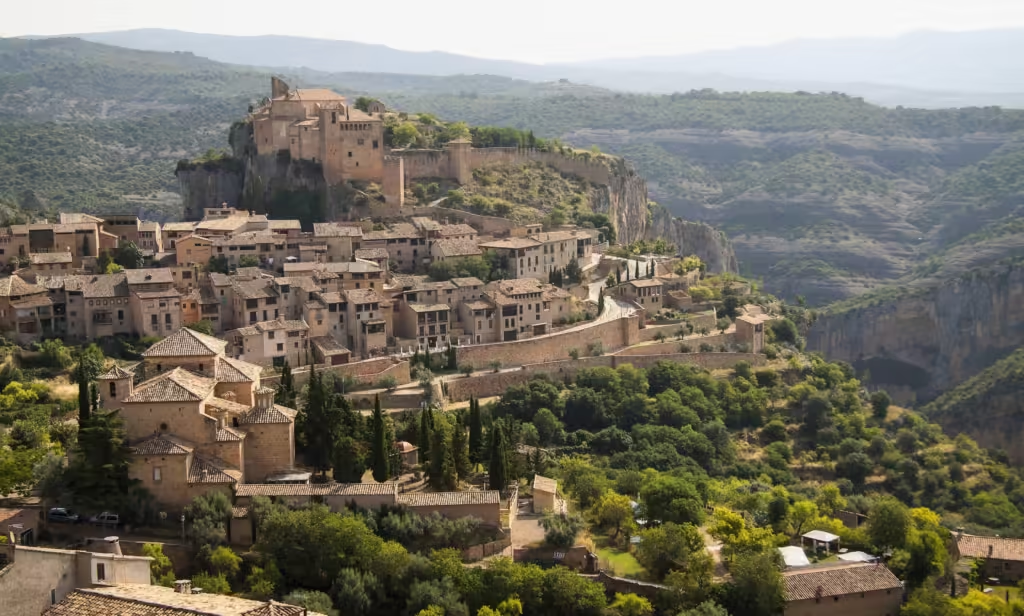Cantabria is a spectacular region in northern Spain that offers everything a traveler could dream of—stunning natural landscapes, beautiful beaches, rich cultural heritage, and exquisite cuisine. Nestled between the Basque Country, Asturias, and Castile and León, Cantabria is a perfect blend of sea, mountains, history, and gastronomy. Whether you’re an adventure seeker or a culture enthusiast, Cantabria has something for you. Here is a complete guide to help you explore this hidden gem of Spain.

Why Visit Cantabria?
Cantabria is lesser-known compared to Spain’s more popular tourist regions, but that doesn’t make it any less fascinating. Cantabria offers lush green valleys, charming coastal towns, and rich cultural experiences that make it a must-visit destination. The picturesque landscapes, from the Picos de Europa mountains to its beautiful beaches, promise an unforgettable experience.
Cantabria’s top attractions include the prehistoric cave art of Altamira, the coastal charm of Santander, and the stunning cliffs of Costa Quebrada. It’s a region full of secrets waiting to be discovered, with experiences ranging from exploring nature reserves to wandering cobbled streets in historical towns.
How to Get to Cantabria
By Plane
Santander Airport (SDR) is the main gateway to Cantabria, with connections to various Spanish and European cities. Several low-cost airlines operate flights to and from Santander, making it an easy entry point for international visitors.
By Train
Cantabria has a good rail network, with trains connecting it to major Spanish cities like Madrid and Bilbao. The RENFE and FEVE train services provide comfortable and scenic routes to Cantabria, ensuring you enjoy the journey as much as the destination.
By Car
Renting a car is one of the best ways to explore Cantabria at your own pace. The A-8 highway connects the region to Bilbao and Asturias, providing an easy drive along the breathtaking northern Spanish coast.
Top Attractions in Cantabria
1. Santander
The capital city of Cantabria, Santander, is known for its breathtaking views, beautiful beaches, and cultural heritage. The Magdalena Peninsula is one of its most iconic attractions, with beautiful gardens, a small zoo, and the Magdalena Palace, which offers panoramic views of the coast. The city’s beaches, such as Playa de la Magdalena and Playa del Sardinero, are perfect for relaxing.
2. Altamira Caves
The Altamira Caves are famous for their prehistoric cave paintings, often referred to as the “Sistine Chapel of Prehistory.” The original caves are closed to the public, but you can visit the Altamira Museum and its replica, where you can admire the remarkable cave art dating back over 36,000 years.
3. Picos de Europa National Park
If you love the outdoors, a visit to Picos de Europa National Park is a must. The park offers breathtaking mountain landscapes, lush valleys, and opportunities for hiking and wildlife spotting. Fuente Dé is a popular spot where you can take a cable car to the top for stunning panoramic views of the mountains.
4. Comillas
Comillas is a charming coastal town known for its unique modernist architecture. The standout attraction is Gaudí’s El Capricho, a stunning house designed by the famous Catalan architect Antoni Gaudí. Comillas also boasts a beautiful beach and cobbled streets lined with traditional houses.
5. Santillana del Mar
Santillana del Mar is often referred to as “the town of three lies,” as it is neither holy (“santo”), flat (“llana”), nor by the sea (“mar”). However, its medieval charm is undeniable. With its cobblestone streets, historic houses, and Collegiate Church of Santa Juliana, Santillana del Mar is one of the most beautiful and well-preserved medieval towns in Spain.
6. Costa Quebrada
The Costa Quebrada is an awe-inspiring stretch of coastline that features dramatic cliffs, secluded coves, and stunning rock formations. It is ideal for nature lovers and photographers who want to experience the raw beauty of Cantabria’s coast.
7. Castro Urdiales
Castro Urdiales is a picturesque fishing village located on the eastern edge of Cantabria. It boasts an impressive medieval church, Santa María de la Asunción, and a seaside castle. The charming harbor area is also great for strolling and enjoying seafood dishes at local restaurants.
Things to Do in Cantabria
1. Hiking in the Picos de Europa
Cantabria is a paradise for hikers. The Picos de Europa National Park has numerous trails for all skill levels, offering stunning views of valleys, mountains, and wildlife. The Ruta del Cares is one of the most popular hikes, known for its breathtaking scenery.
2. Beach Hopping
Cantabria is home to some of the most beautiful beaches in Spain. Playa de Langre, with its steep cliffs and turquoise waters, is a favorite among surfers. Playa de Oyambre is a perfect spot for those looking for a quieter, more relaxing beach experience.
3. Exploring Caves
In addition to the Altamira Caves, Cantabria has several other impressive caves worth exploring. The El Soplao Cave, with its incredible stalactite and stalagmite formations, is one of the most popular tourist attractions.
4. Savoring Cantabrian Cuisine
Cantabria’s cuisine is a delightful blend of fresh seafood, hearty mountain dishes, and delicious dairy products. Don’t miss the opportunity to try “cocido montañés,” a traditional mountain stew, or the locally made cheeses. The coastal towns also offer a variety of fresh seafood, including anchovies from Santoña, which are famous throughout Spain.
Where to Stay in Cantabria
1. Santander
Santander offers a range of accommodations, from luxury hotels to budget-friendly hostels. Staying in Santander is ideal for those who want easy access to beaches, cultural sites, and nightlife.
2. Santillana del Mar
If you prefer a more historical atmosphere, staying in Santillana del Mar can be an enchanting experience. There are charming guesthouses and boutique hotels that allow you to soak in the medieval charm of this town.
3. Rural Stays
For a more authentic experience, consider staying in one of Cantabria’s rural casas rurales (country houses). These accommodations are perfect for travelers looking to enjoy the tranquility of the countryside while being close to natural attractions.
Best Time to Visit Cantabria
The best time to visit Cantabria is during late spring (May to June) or early autumn (September to October). The weather during these months is mild and pleasant, making it ideal for outdoor activities like hiking, exploring towns, and enjoying the beaches. The summer months (July and August) are also great, especially if you want to enjoy the beaches, but it can get crowded during this time.
How to Get Around Cantabria
1. By Car
Renting a car is the best way to explore Cantabria’s diverse landscapes. With a car, you have the freedom to visit coastal towns, beaches, and mountainous areas at your own pace.
2. By Bus
Cantabria has an extensive bus network that connects its towns and cities. ALSA is one of the main bus operators, providing reliable service between major destinations within the region.
3. By Train
Train travel is also an option, especially for connecting Santander with other major towns. FEVE trains are great for scenic rides along the coast.
FAQs About Cantabria
1. Is Cantabria suitable for family travel?
Absolutely! Cantabria is a family-friendly destination with many activities suitable for children, such as visiting the Magdalena Peninsula, enjoying the beaches, and exploring the caves. Kids will also love the cable car ride in Fuente Dé and visiting the small zoo in Santander.
2. What are some must-try dishes in Cantabria?
Some must-try dishes include “cocido montañés” (a hearty bean and meat stew), fresh anchovies from Santoña, “orujo” (a local liqueur), and delicious dairy products such as cheese and “quesada pasiega” (a traditional cheesecake).
3. Can I visit Cantabria without a car?
Yes, you can visit Cantabria without a car. There are buses and trains that connect major towns and tourist spots. However, renting a car offers more flexibility, especially for visiting remote areas and natural attractions.
4. What is Cantabria’s climate like?
Cantabria has an oceanic climate, meaning mild temperatures throughout the year with moderate rainfall. Summers are usually warm but not too hot, while winters are mild with occasional rain.
5. Is it possible to visit the Altamira Caves?
The original Altamira Caves are closed to the public to preserve the prehistoric paintings. However, you can visit the Altamira Museum, which features an exact replica of the caves, giving you a chance to experience this prehistoric wonder.
6. Are there any festivals in Cantabria?
Yes, Cantabria has several festivals throughout the year. The Batalla de Flores in Laredo is a popular flower festival in August. Santander also hosts Semana Grande, a week-long festival with concerts, bullfights, and traditional dances in July.
Final Thoughts: Discover the Magic of Cantabria
Cantabria is a perfect blend of natural beauty, rich culture, and authentic Spanish charm. With its scenic landscapes, ancient caves, beautiful beaches, and delicious cuisine, Cantabria has something for every type of traveler. Whether you’re hiking through the Picos de Europa, relaxing on the beaches of Santander, or exploring historical towns like Santillana del Mar, Cantabria offers an unforgettable experience.
Plan your visit, embrace the magic of Cantabria, and immerse yourself in this hidden gem of Spain.

